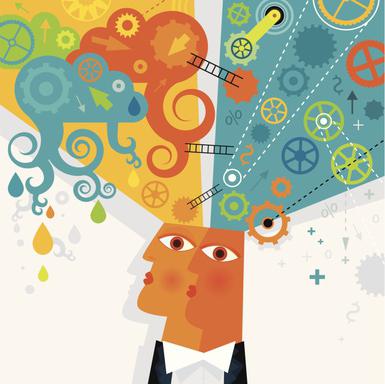It is generally accepted that creativity and science are in no way connected, and sometimes opposite, to our life. But is it really so? About whether creativity exists in science and what it is expressed in, you will learn from this article. And also you will learn about famous personalities who have proved by their example that scientific and creative activities can successfully coexist.
What is creativity?
This word refers to the creation of something fundamentally new in any area of human life. The first sign of creativity is special thinking that goes beyond the scope of patterns and everyday attitudes. This creates spiritual or material values: works of music, literature and visual art, inventions, ideas, discoveries.
Another major sign of creativity is the uniqueness of the result, as well as its unpredictability. No one, often even the author himself, can predict what will result from a creative understanding of reality.
An important place in creativity is occupied by an intuitive understanding of reality, as well as special states of human consciousness - inspiration, insight, etc. Thanks to this combination of novelty and unpredictability, an interesting creative product is born.
What is science?
In this area of our activity, we accumulate and systematize objective knowledge about the world around us, as well as about the person himself. A feature of the scientific approach is a prerequisite: any theoretical judgment should be supported by objective facts and evidence. If this is not the case, then the judgment cannot be called scientific. Moreover, it is not always false - it is simply impossible at present to confirm it with objective (independent of human desires) data.
Evidence of the judgments is collected using various data: observation, experiment, work with fixing and computing devices, etc. Then the obtained data is systematized, analyzed, cause-effect relationships are found between objects and phenomena, conclusions are drawn. This process is called scientific research.
Scientific knowledge usually begins with a hypothesis or theory, which is then tested in practice. If an objective study confirms a theoretical proposition, then it becomes a natural or social law.
Varieties of creativity
Creativity can manifest itself in absolutely all spheres of human life: from the creation of cultural objects to communication. Therefore, its types are distinguished:
1. Artistic creation (creation of objects of the material or spiritual world with esthetic value).
2. Social creativity (training, advertising, trade, public relations, political reforms, protests, revolutions).
3. Technical creativity (invention of new technical products, electronics, high-tech devices, etc.).
4 Scientific creativity (the development of new knowledge, the expansion of the boundaries of the already known, the confirmation or refutation of previously existing theories).
In the latter variety, we see how science and creativity are connected. Both are characterized by the creation of something new, unique and important, of value to humans. Therefore, creativity in science is far from the last place. It can be said to be one of the fundamental components.
Types of Sciences
Now let's see in which varieties science is represented in our lives . The classification is as follows:
1. Natural sciences (studying the laws of animate and inanimate nature; biology, physics, chemistry, mathematics, astronomy, etc.).
2. Technical sciences (studying the technosphere in all its manifestations; computer science, chemical technology, nuclear energy, engineering, architecture, biotechnology and many others).
3. Applied sciences (aimed at obtaining a result that can then be used in practical activities; applied psychology, forensics, agronomy, metallurgy, etc.).
4. The humanities (they study the cultural, spiritual, mental, moral and social activities of a person; ethics, aesthetics, religious studies, cultural studies, art history, anthropology, psychology, linguistics, political science, jurisprudence, history, ethnography, pedagogy, etc.).
5. Social sciences (they study society and its interconnections, largely echoing the humanities; history, sociology, social psychology, political science, etc.).
Can science be creative
From the classification of varieties of creativity it can be seen that scientific knowledge very often includes an element of creativity. Otherwise, it would be difficult to make discoveries and create inventions, because in such cases, scientists are often driven by intuitive guesses and unexpected insights, which are then supported by objective data.
Creativity in science is also manifested in the comprehension of already known facts, which can either be proved on the other side or refuted thanks to a new, fresh look. The debunking of myths rooted in science also requires extraordinary thinking.
Creativity in science by the example of a famous person
At the household level, it is customary to divide people into those with a humanitarian or technical mentality, believing that the first category is good in creative and social activities, and the second in scientific, technical and applied. In fact, all spheres of life in modern society are closely interconnected, and human abilities are diverse and can be developed.

There is not only creativity in science, but a combination of scientific and artistic world views is also possible. Vivid examples of this are the legacy of L. da Vinci (artist, sculptor, architect, musician, inventor and military engineer), A. Einstein (theoretical scientist, violinist), Pythagoras (mathematician and musician), N. Paganini (musician, composer , music engineer). Creativity in science is no less clearly manifested by the example of a famous person, M.V. Lomonosov, who was a person with encyclopedic knowledge and multiple talents in various fields, which allowed him to be realized as a natural scientist, chemist, physicist, astronomer, geographer, as well as a historian, enlightener, poet, literary critic and artist.
It is important to remember that science, creativity, culture are not separate facets of human activity, but interconnected parts of one whole.